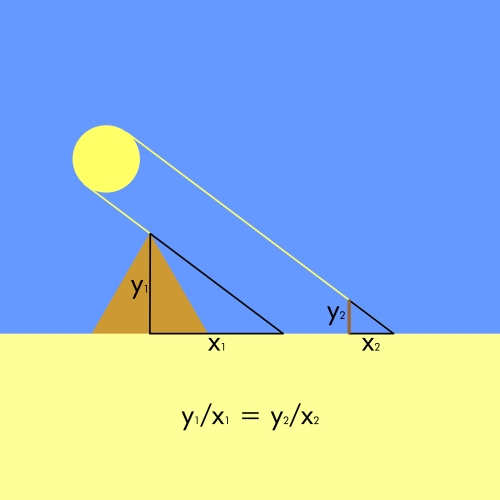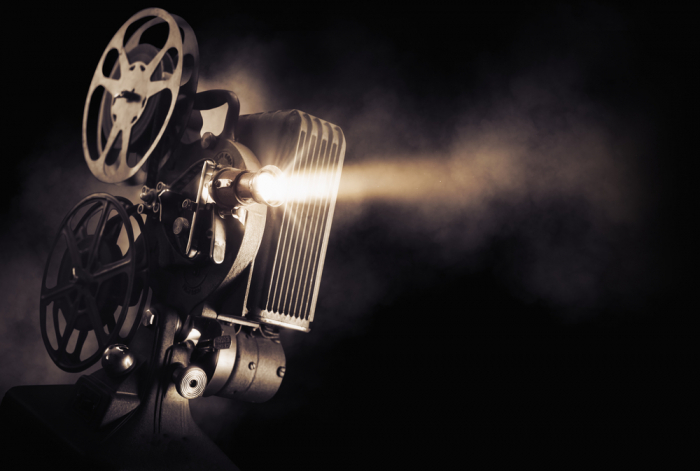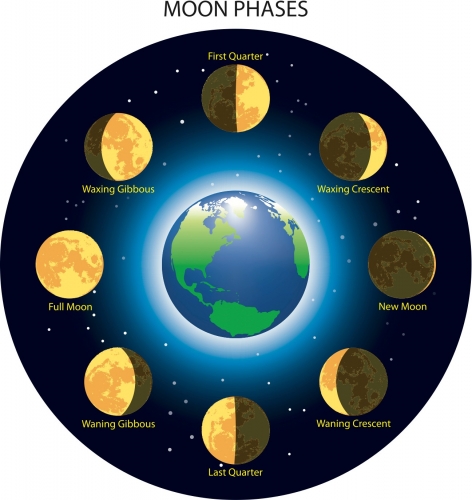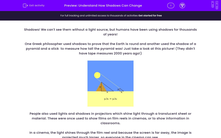Shadows! We can't see them without a light source, but humans have been using shadows for thousands of years!
One Greek philosopher used shadows to prove that the Earth is round and another used the shadow of a pyramid and a stick to measure how tall the pyramid was! Just take a look at this picture! (They didn't have tape measures 2000 years ago!)

People also used lights and shadows in projectors which shine light through a translucent sheet or material. These were once used to show films on film reels in cinemas, or to show information in classrooms.
In a cinema, the light shines through the film reel and because the screen is far away, the image is projected much larger, so everyone in the cinema can see.

In projectors, the light shines through a plastic sheet that has information on it. This image is reflected off a mirror and then onto a larger screen - like magic!
Today, we use shadows in sundials to find out the time, we use shade to protect ourselves from the Sun and shadows even affect how much of the moon we see each night!

The light on the moon is created from the reflection of the Sun, so when the Earth is between the Sun and the moon, parts of the moon are not visible! That's what makes the crescent shapes.
Shadows are created when a light source shines on an opaque or translucent object or material. Light cannot bend around objects that block its way and this creates a dark patch behind the object, roughly the same shape as the object it is hitting.
The more translucent a material is, the lighter shadow it will make, such as stained-glass windows or tissue paper.
Opaque materials make very dark shadows as they do not let any light through.
Finally, we know that the size of a shadow can change.
The distance between an object and light source changes the shadow. The closer the light source is to the object, the larger the shadow is because it is blocking more of the light.

The angle of the light can change the size of a shadow too. Longer shadows are formed when the light source is to one side and smaller shadows appear when the light source is directly above an object.
In this activity, we will be thinking about how shadows are used and changed.







